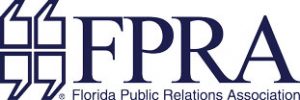By Lindsey Robertson, APR, Gainesville Chapter
It was around 10 p.m. on Oct. 1, 2017 when David Riggleman, director of communications for the City of Las Vegas, heard his 16-year-old son say there seemed to be something going on at Mandalay Bay. Shortly after that, Riggleman got a call from the emergency manager saying it looked like 82 people were dead and 20 injured at the Route 91 Harvest music festival. “It was incredible how fast the news traveled,” he said. His son, having friends who were at the concert, found a video on social media, and as soon as Riggleman heard the automatic gunfire, he knew immediately it was going to be bad. “My son knew the magnitude of it before I did.”
This topic is not Riggleman’s favorite to talk about, and understandably so. He reflected on the very recent shootings in El Paso, Tex. and Dayton, Ohio saying he knew exactly what kind of situation each community was facing.
Riggleman, who has been in his position since 1999, said 9/11 was a wakeup call, as some of the terrorists had been in Las Vegas at some point prior. He went three times to the FEMA training center in Maryland and his department has done many drills. Up until October 2017, his team experienced a flash flooding but nothing like a shooting.
Riggleman explained the importance of message coordination between the City of Las Vegas and the police department. Neither spoke for the other. They focused on getting information out fast, but it had to be accurate. The initial news conference after the shooting was around 11:30 p.m., and Riggleman mobilized his digital team before the morning news cycle.
He emphasized the huge role social media played in communicating with the public, first telling them to avoid certain areas and after that, helping people find their loved ones. “It was critical for us to let people know how to get in touch with loved ones,” he said. “So many people wanted to help.”
Twitter was the key tool the City of Las Vegas used. They found they could get messages out faster on that platform than anywhere else. After the event, the City’s account gained 35,000 to 40,000 new followers. Riggleman set an automatic reply on his email telling people to follow the City on Twitter or visit its website. One message they shared was that giving blood was the best way people could help at that time. People immediately stood in line for hours to make their donation.
When asked how much of what the mayor of Las Vegas said was scripted, he explained that the team always provides bullets, and the mayor adds to those. And while Riggleman’s team worked closely with the police department, a lot of information had to come directly from MGM as the owner of Mandalay Bay.
So what can we, as public relations practitioners, learn from what Riggleman’s experience? He emphasized two key areas.
- You must have an emergency response plan AND a crisis communications plan. They are not one in the same. “If you don’t do anything else, go back to your office and formulate an emergency plan and a crisis communications plan. Know who you would need to connect with to get your message out during a crisis.”
- On a more personal level, he shared that while he and his team did a lot of things right, he would have done one thing differently. He worked too much in the first few days and ignored having someone else step in for him after 12 hours, which he knew through his training needed to happen. “As a leader of my team, my people were following me,” he said. “I was leading all of them off the edge of a cliff. They saw how I was working and they would do the same. By Wednesday I was completely fried.”
And he reminded us that no matter what type of communications practitioner we are, if something like this happens in our community, it will impact everyone.



